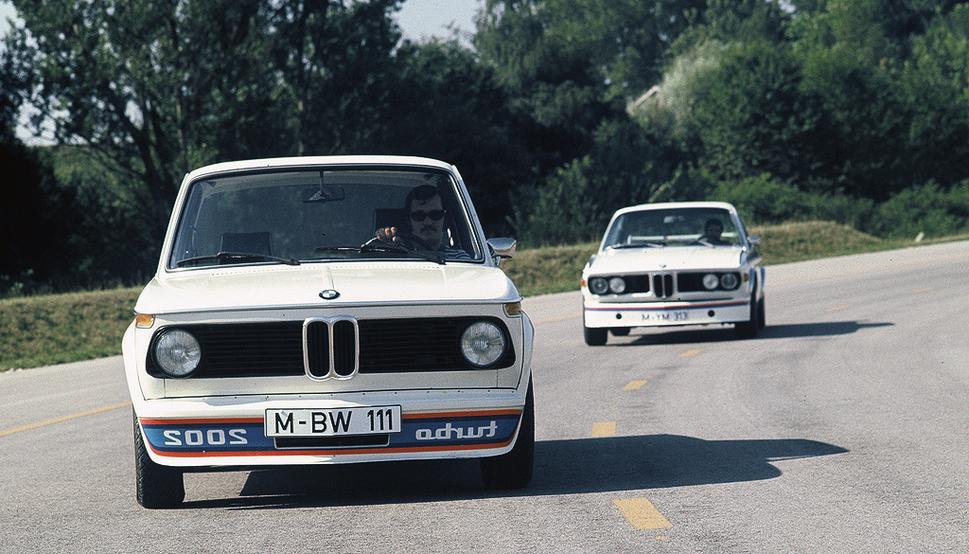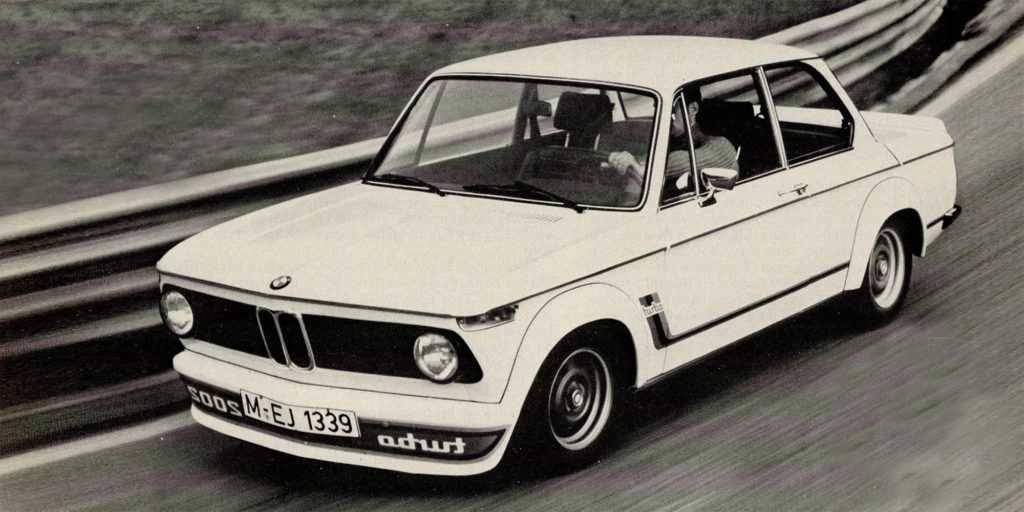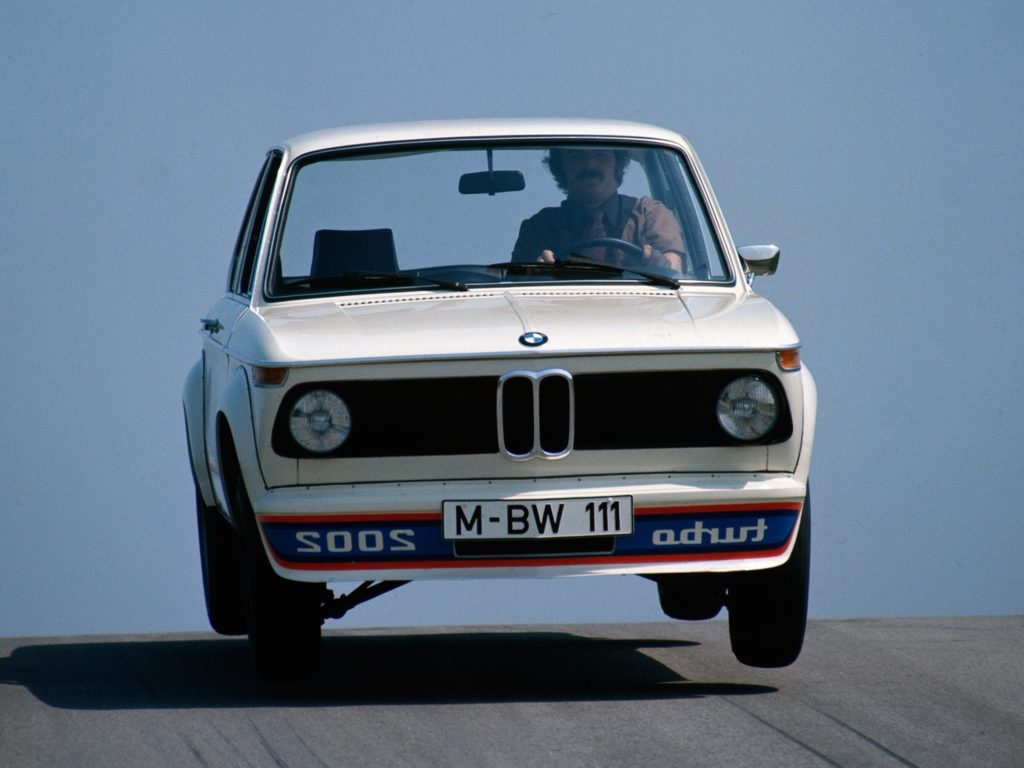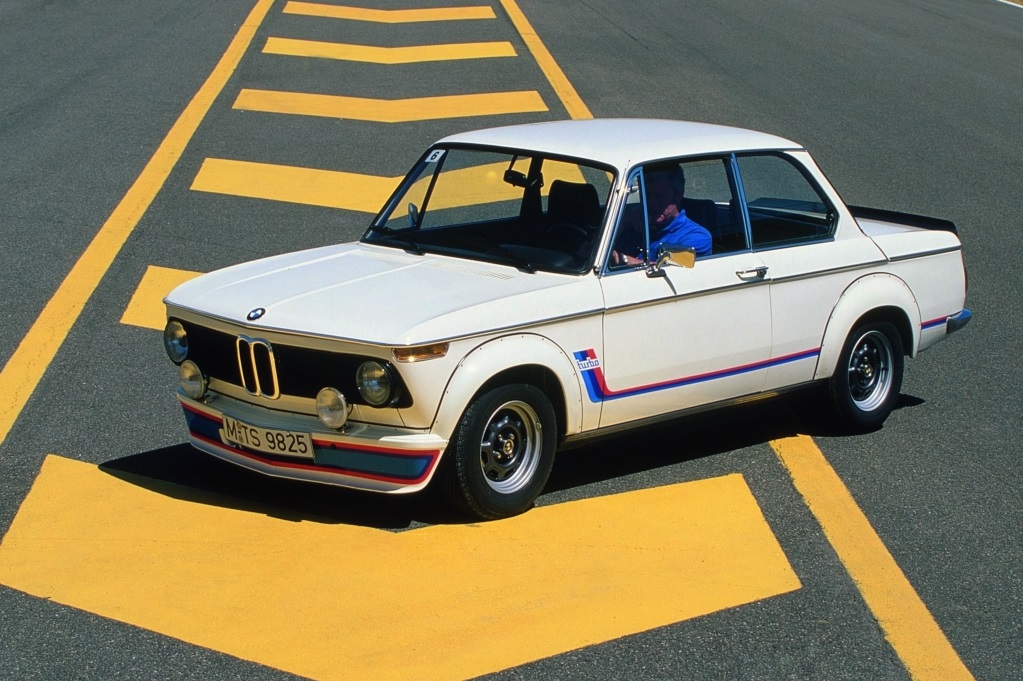Effort is the antithesis of grace, its often said, and in the world of car design the statement is particularly true for the vehicles we hold in the highest esteem. The best cars are the result of visionaries or small teams, devoid of too much managerial or marketing department input, simply working towards making the types of cars they want to drive themselves.
In 1973, had BMW set out to define the performance sedan segment with their upcoming 2002 Turbo they would almost certainly have failed. Instead, their approach was simply to build a compact sedan that drove with poise and offered blistering performance. A car that offered the practicality of a sedan combined with levels of performance to challenge the fastest sports cars. It was the answer to a question that nobody had seriously asked, but one that instantly seemed so obvious and would go on to create a segment responsible for some of the most exciting and useable vehicles ever seen.
Taking the already prodigious 2002 Tii as base, itself a development of the smaller engined 1602, engineer Alex von Falkenhausen began the search for more power with which to fully exploit the truly competent chassis. The 2002 already had the largest available engine, so attention instead turned to the Motorsport department’s Group 5 racing program and the dark art of turbocharging. A turbocharged BMW 2002 had won the 1969 European Touring Car Championship in the hands of Diester Quester, so the new technology was adopted for road use, creating Europe’s first turbocharged production car.
The result is relatively crude by today’s standards and is something a competent amateur could build in a home garage, but the application of turbocharging in a road car was cutting edge for the early seventies. So new was the technology that a reasonable percentage of Road & Track’s initial 2002 Turbo road test report was dedicated to explaining how it all worked.
A KKK turbocharger adding just 8psi of boost was mounted to a new exhaust manifold, feeding its positive pressure across the top of the 1991cc inline four, meeting fuel supplied by the existing Kugelfisher mechanical fuel injection. Compression was reduced from 9.5:1 to 6.9:1, the ignition timing curve was modified, and an oil cooler was fitted, but the single cam motor was otherwise left alone. Larger ventilated brakes, an optional dogleg five speed manual gearbox, a ZF limited slip differential and wider wheels completed the sum total of mechanical changes. It could easily have been more extreme, but von Falkenhausen’s opinion was that “we rather thought 170BHP was about the limit for the running gear of a car not necessarily driven by experts only”.
The turbocharger added 40bhp, taking output to 167bhp at 5800rpm and 179lb ft at 4000rpm, more than double that of the original 1602. The result was startling to say the least; 100km/h was reached in 7.3 seconds and top speed grew to 211km/h. At its 1973 Frankfurt motor show launch there were few faster cars on the road, and certainly nothing with three-box saloon styling and five seats could even keep close.
The modifications to the styling of the otherwise conservative 2002 Tii really ramped up the drama. Whilst the idea of creating a true sleeper must have been discussed, BMW instead discarded traditional German conservatism and attached bolt-on wheel arch flares, front and rear spoilers to increase high-speed stability, and those bold graphics featuring front and side stripes in the BMW Motorsport tricolour.
It was the large reverse-printed ‘2002 Turbo’ on the front spoiler of the first press cars that caused the most controversy; an alleged acknowledgment by BMW that its new car was designed to be driven carelessly. The German media labelled BMW “irresponsible” and ridiculed it for “provoking aggressiveness”, and by day two of the Frankfurt motor show the printing had been painted over on press cars and permanently removed from the production version. It clearly appealed to customers, however, and many sought out the graphics as an aftersales option.
The driving experience was characterised by turbo lag, and lots of it. Things became rather exciting above 4000rpm, but the lower compression ratio made it feel quite sluggish at slow speeds and it lacked immediacy in throttle response. It was a car that demanded skill from its driver; unexpected boost put many sideways into stationary objects when driven with a blunt touch, but a driver aware of its characteristics was able to keep it on-boost and largely avoid the spikey delivery. The extra power made best use of the 2002’s already prodigious handling on twisting roads, and it was especially faster and more comfortable when cruising at autobahn speeds.
Thanks to a low kerb weight and that aggressive delivery, the 2002 Turbo still feels quick today. That big turbocharger is loud, and the driving experience is completely dominated by the sounds of it spooling up and down with engine rpm, backed up by a composed ride and the distinguished handling that makes all 2002’s such a treat.
The 2002 Turbo was a victim of its time, its potentially bright future cut short by events out of BMW’s control. The early seventies saw German traffic law become stricter and the freedom of the derestricted autobahn diminished as speed limits were gradually introduced to most major roads, but its fate would already be sealed. Its September 1973 launch preceded the OPEC oil embargo by just a month; unnecessary driving was quickly banned and nobody knew where the oil crisis was headed. Performance cars quickly fell out of favour, and when production stopped in 1975 just 1672 examples had been built.
As is so often the case with the collector cars that we hold in such high regard today, a distinct unpopularity in period meant that few were built. Rarity and genuine technical innovation are key factors in determining collectability, which explains why values for 2002 Turbos have skyrocketed in the past few years. In fact, the curve showing 2002 Turbo auction results is broadly similar to that of its power delivery – largely flat, with a sudden, gigantic jump at the end.
Have a play with our auction results tracking tool, below, and see what we mean. Today, £20k will buy a really nice 2002Tii, and you could have picked up a Turbo for little more than that five years ago. But these days, you’ll need closer to £80k to secure a Turbo… if you can find one.



